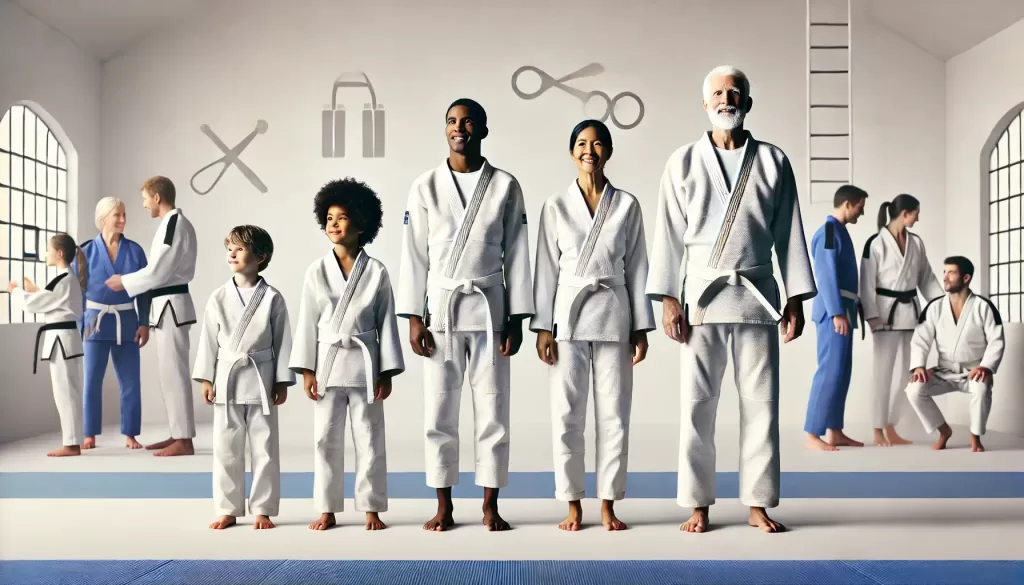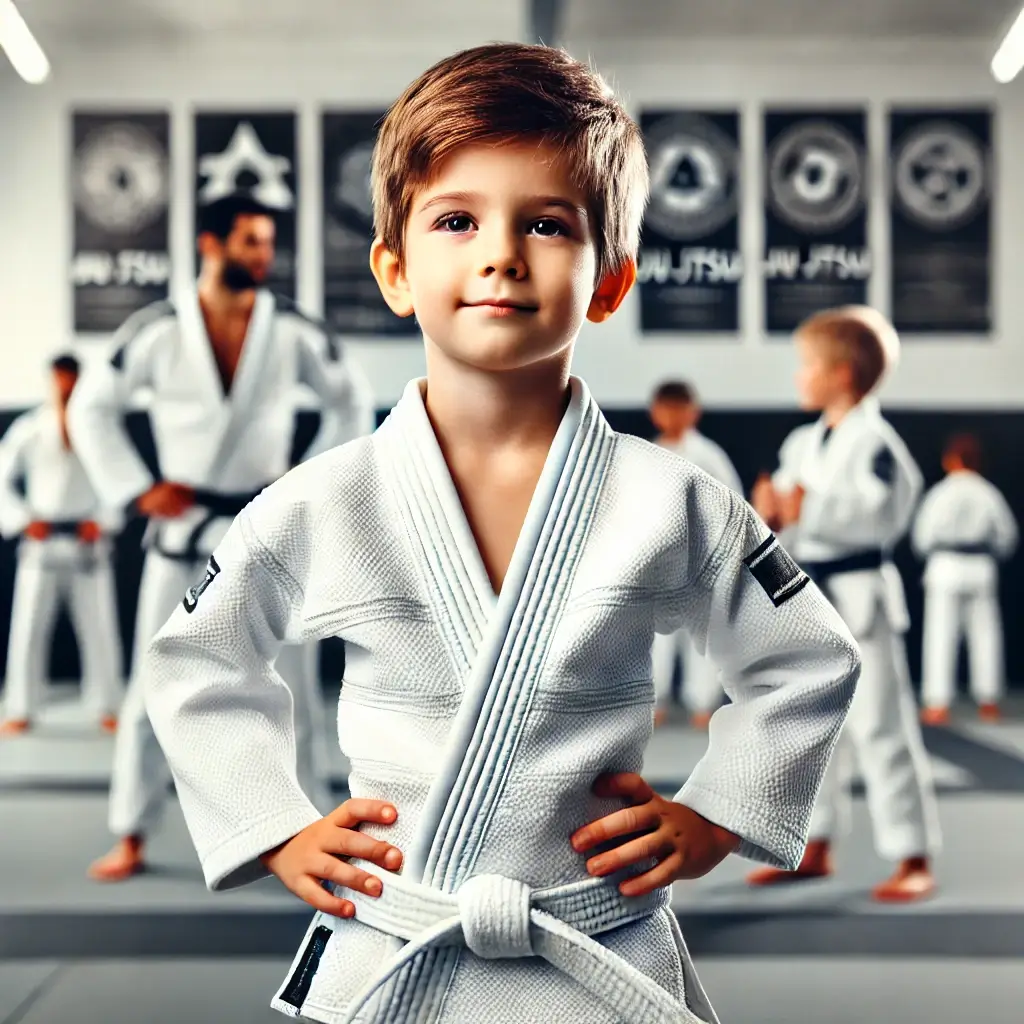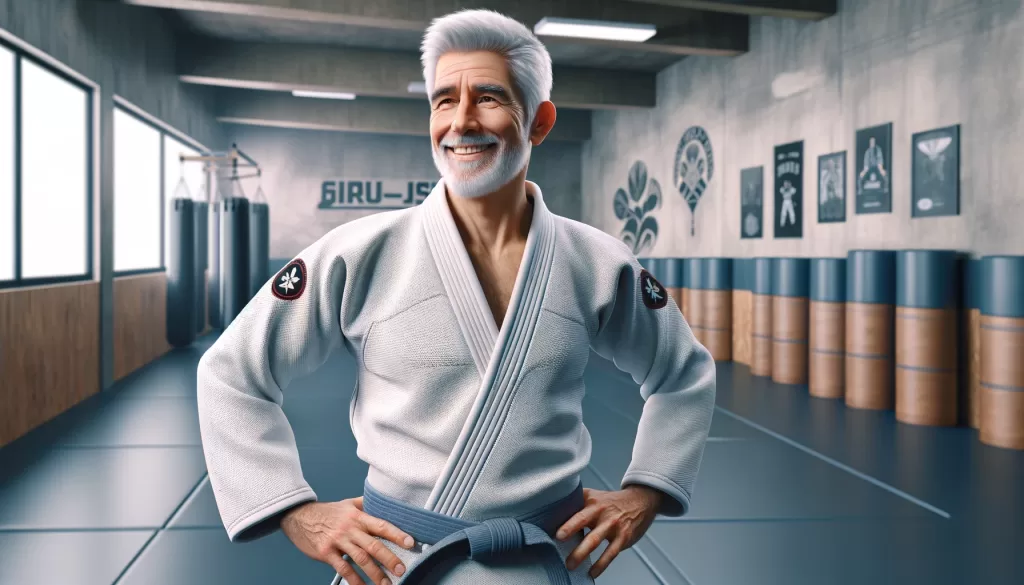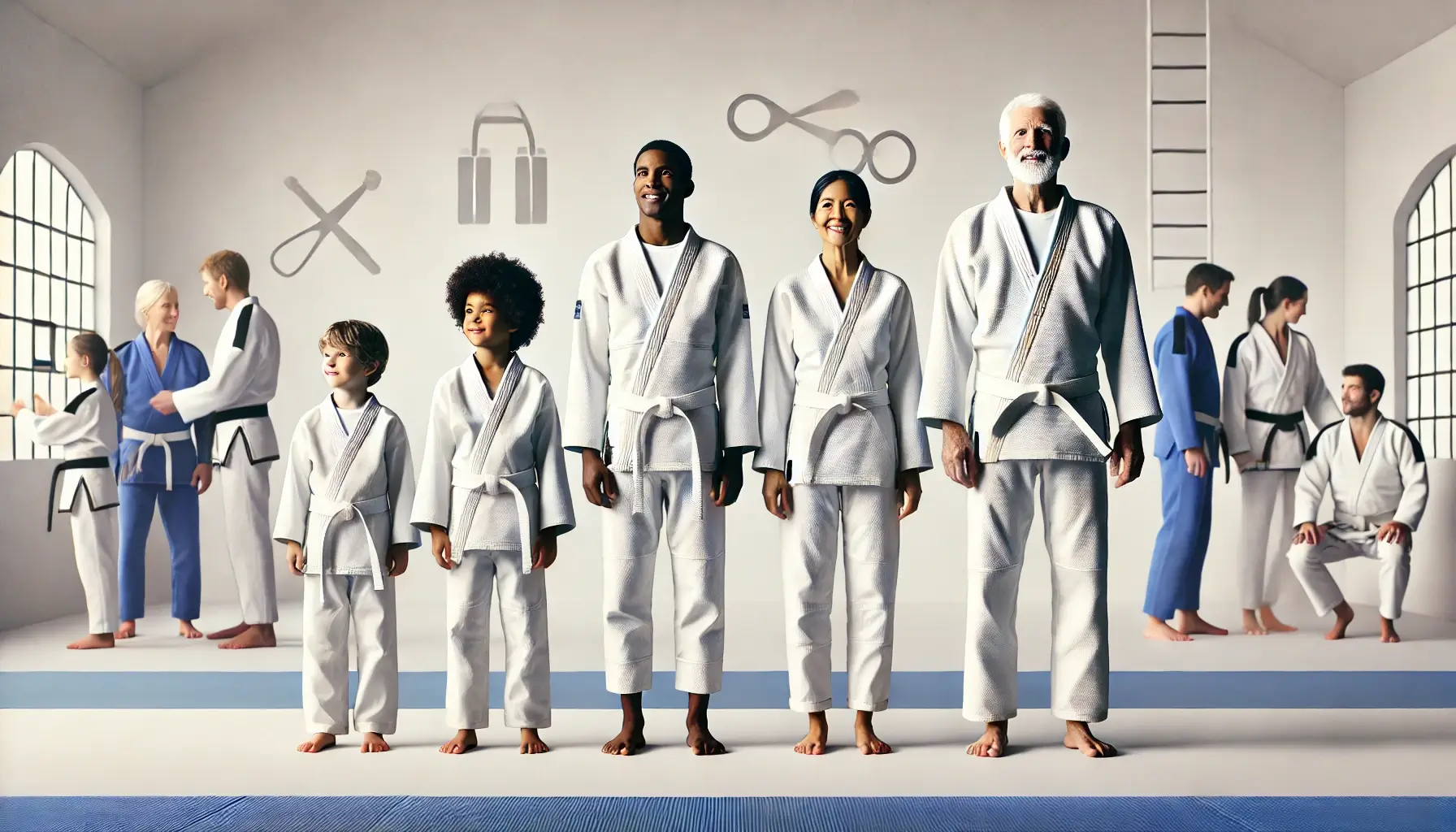Jiu Jitsu is a martial art that promotes physical and mental growth, making it accessible and beneficial to people of all ages. Whether you’re a parent looking for the perfect activity for your toddler or a 60-year-old wanting to stay active, Jiu Jitsu offers numerous benefits that cater to different stages of life. The question often arises: what is the best age to start training Jiu Jitsu? The answer is simple—there is no “wrong” age. Whether you’re 3 or 60, Jiu Jitsu has something valuable to offer, and today we’ll explore what those benefits are at various ages.

Why Age Doesn’t Limit Your Potential in Jiu Jitsu
Unlike other sports, where physical abilities may decline with age, Jiu Jitsu’s focus on leverage, technique, and strategy over brute strength makes it an ideal practice for all ages. It’s an adaptable martial art that can be modified to suit any practitioner’s age, skill level, or physical condition. No matter when you begin, Jiu Jitsu offers a pathway to personal development, fitness, and mental resilience.
Now, let’s take a closer look at how Jiu Jitsu benefits people at different life stages, starting as young as 3 years old and moving through various age groups.
Ages 3-5: Early Development and Coordination

Starting Jiu Jitsu as early as age 3 is becoming more common, with specialized “Tiny Ninjas” or “Little Warriors” programs available for toddlers. At this age, the focus is not on complex techniques but on foundational movements that enhance motor skills, coordination, and balance. Children are taught in a fun, safe environment that encourages physical activity while fostering social skills and teamwork.
Benefits for this age group:
- Coordination and balance: These are key developmental skills that can be enhanced through basic movements like rolls and stance work.
- Listening and following instructions: Jiu Jitsu helps children understand the importance of paying attention, following instructions, and respecting authority.
- Confidence building: Even at this young age, children begin to develop confidence as they learn new skills.
Ages 6-9: Building Focus, Discipline, and Confidence
As children grow, they begin to grasp more complex concepts. Kids in the 6-9 age range are ready to dive deeper into the technical side of Jiu Jitsu. They are introduced to basic submissions, positional control, and escapes, but the emphasis is still on fun and safe practice. This age group benefits from the mental discipline required in Jiu Jitsu, which helps them in school and social settings.
Benefits for this age group:
- Focus and discipline: Jiu Jitsu helps kids develop the focus they need for academic success and everyday life.
- Problem-solving: Kids learn to think critically about how to solve problems on the mat, which translates into better decision-making skills off the mat.
- Physical fitness: Regular training helps children stay fit and develop a love for physical activity, reducing the risk of childhood obesity.
Ages 10-13: Developing Emotional Resilience and Teamwork
At this stage, kids are entering pre-adolescence, which can be a challenging period emotionally and socially. Training Jiu Jitsu during these years can provide a positive outlet for stress, offering a community of like-minded peers and instructors who support their growth. More advanced techniques, such as guard passing and defensive strategies, are introduced, and young practitioners are encouraged to compete, if they choose, to test their skills in a safe environment.
Benefits for this age group:
- Emotional resilience: Kids learn how to handle pressure and frustration by working through difficult situations on the mat.
- Teamwork and sportsmanship: Jiu Jitsu emphasizes respect for training partners, fostering a sense of community and teamwork.
- Goal-setting: Kids learn the value of setting and achieving goals, whether it’s mastering a new technique or earning a new belt.
Ages 14-18: Building Strength, Focus, and Mental Toughness
Teenagers who practice Jiu Jitsu develop not only physically but also mentally. The teenage years are often marked by significant changes, both in terms of physical development and emotional maturation. Training in Jiu Jitsu provides a constructive way to channel energy and stress. At this stage, teens become more proficient in the art, focusing on advanced techniques, self-defense, and even competition if they are interested.
Benefits for this age group:
- Mental toughness: Training teaches teenagers how to push through difficult situations, whether it’s a challenging roll or dealing with setbacks in life.
- Self-defense: Learning effective self-defense techniques can boost a teenager’s confidence and safety, especially in potentially dangerous situations like bullying.
- Physical strength: As their bodies develop, teens will see improvements in their overall strength, flexibility, and cardiovascular health.
Ages 19-30: Peak Physical Fitness and Personal Growth
The late teens to early adulthood is often seen as the prime age to start or intensify Jiu Jitsu training. This is when many athletes are at their physical peak, allowing them to fully engage with the most demanding aspects of the sport. Many in this age group use Jiu Jitsu as a means to stay in top physical condition, compete at a high level, or simply push their mental and physical boundaries.
Benefits for this age group:
- Peak fitness: Jiu Jitsu provides a full-body workout, building endurance, strength, and flexibility.
- Stress relief: Many young adults face pressure from school, work, or personal life, and Jiu Jitsu offers a healthy way to manage stress.
- Personal growth: At this age, practitioners often delve deeper into the philosophical aspects of Jiu Jitsu, learning lessons about patience, humility, and perseverance.
Ages 31-40: Maintaining Fitness and Managing Life’s Responsibilities
In your 30s, life’s responsibilities often take center stage. Many people in this age group are balancing careers, families, and other obligations. While physical fitness may not come as easily as it did in your 20s, Jiu Jitsu offers a great way to stay active and de-stress. It’s a lifelong sport that allows practitioners to adapt their training to meet their evolving needs.
Benefits for this age group:
- Physical maintenance: Jiu Jitsu helps people in their 30s maintain flexibility, strength, and cardiovascular health.
- Work-life balance: Jiu Jitsu provides a much-needed break from daily stressors, giving practitioners time to focus on personal wellness.
- Community: Training provides a supportive community of like-minded individuals, helping to build friendships and a sense of belonging.
Ages 41-50: Aging Gracefully with Jiu Jitsu
As you move into your 40s, the focus of Jiu Jitsu training often shifts from intense competition to longevity and sustainability. At this age, practitioners become more aware of their bodies’ limitations, but they also benefit from the years of wisdom and experience they’ve accumulated on the mats.
Benefits for this age group:
- Injury prevention: Training intelligently and focusing on proper technique over brute strength can help prevent injuries and keep practitioners active.
- Mental clarity: Many people in their 40s use Jiu Jitsu as a form of active meditation, enjoying the mental clarity that comes from problem-solving on the mats.
- Longevity: Jiu Jitsu promotes a healthy lifestyle, which can help stave off many of the ailments that come with aging, such as cardiovascular issues or joint stiffness.
Ages 51-60: A Path to Staying Active and Mentally Sharp

For those in their 50s, Jiu Jitsu offers a way to stay active while maintaining mental acuity. While you may not roll as hard or as often as someone in their 20s or 30s, you can still enjoy the benefits of regular practice, including staying in shape and keeping your mind sharp.
Benefits for this age group:
- Joint health: Jiu Jitsu can improve mobility and flexibility, keeping joints healthy and reducing stiffness.
- Brain health: Practicing techniques and solving problems on the mat keeps the brain active, helping to prevent cognitive decline.
- Social engagement: Staying socially active is important in your 50s, and Jiu Jitsu provides a community of people to train with and learn from.
Ages 60+: Aging Actively with Wisdom and Grace
Many practitioners continue to train well into their 60s and beyond. At this age, the focus is often on maintaining mobility, flexibility, and mental sharpness. Whether you’ve been training for decades or are starting later in life, Jiu Jitsu offers a way to keep both body and mind engaged.
Benefits for this age group:
- Longevity: Jiu Jitsu keeps practitioners moving, reducing the risk of many age-related diseases like arthritis or heart disease.
- Mental stimulation: The mental challenge of Jiu Jitsu can help keep cognitive functions sharp and prevent age-related decline.
- Community and mentorship: Older practitioners often take on mentorship roles, passing down their knowledge to younger generations while staying connected to the community.
Conclusion: Jiu Jitsu for Life—At Any Age
The beauty of Brazilian Jiu Jitsu lies in its adaptability. Whether you’re starting at age 3 or 60+, Jiu Jitsu has something to offer. It’s a martial art that grows with you, providing lifelong benefits that go beyond physical fitness. The mental discipline, community, and sense of accomplishment you gain from Jiu Jitsu make it a valuable practice for anyone, at any age.
Ready to start your Jiu Jitsu journey? Whether you’re looking for **Jiu JitsuReady to start your Jiu Jitsu journey? Whether you’re looking for Jiu Jitsu classes for kids or want to stay active in your 60s, Jiu Jitsu offers lifelong benefits for every age. At The Way Martial Arts, we welcome all ages to join our supportive community in Lake Worth, Boynton Beach, and Lantana. No matter your fitness level or experience, our tailored programs ensure you get the most out of your training.
Book your first class today and experience the life-changing benefits of Brazilian Jiu Jitsu!
Transform Your Life with Jiu Jitsu


Leave a Reply